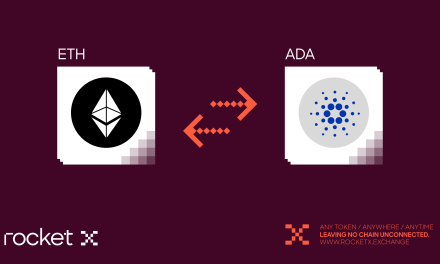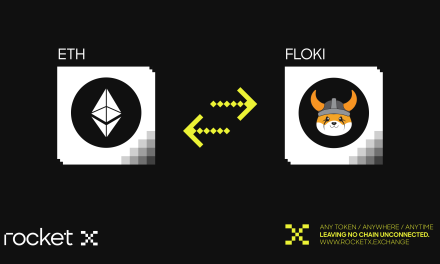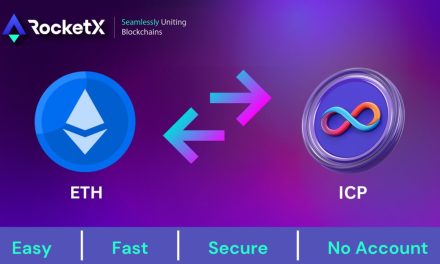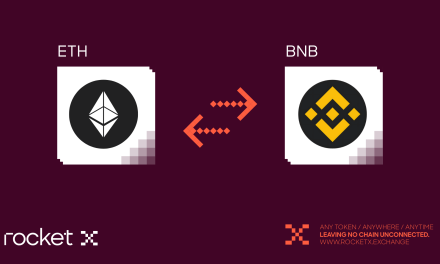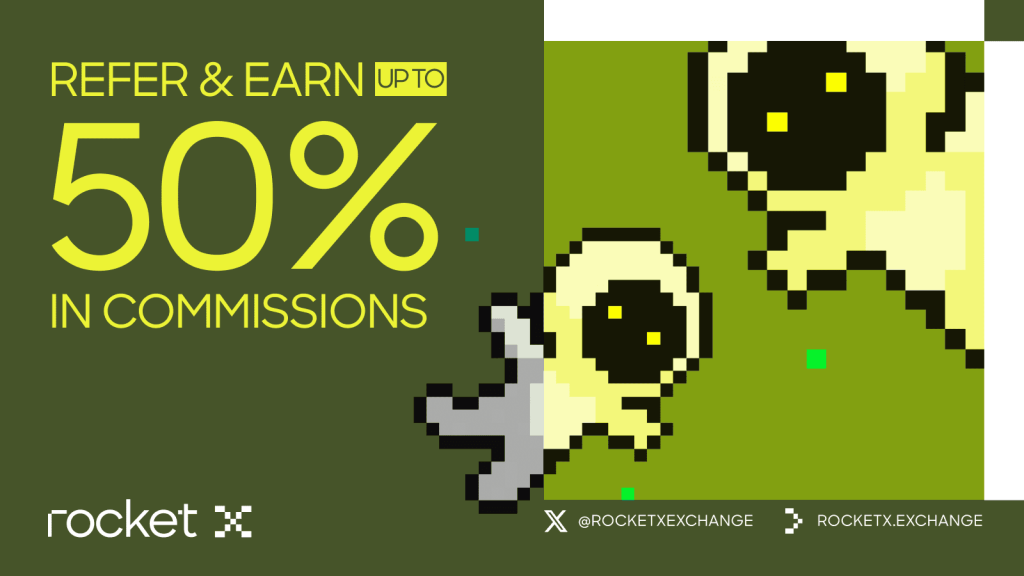
Introduction
Imagine hearing about a promising new blockchain—fast, modular, and scalable. You’re curious. You want to explore. But the moment you try to interact with it, you hit a wall:
- First, you need to bridge your tokens from another blockchain.
- Then, you might have to swap those tokens into the ones used on the new chain.
- Also, you’ll probably need to set up a new wallet or install a browser extension.
- And the most frustrating part—if you’re using native bridges, withdrawing your funds can take a long time. Sometimes, you have to wait up to 7 days just to get your money back.
This is the typical multichain onboarding experience—fragmented, time-consuming, and frustrating.
Now, meet Initia Blockchain, a Layer 1 network and rollup ecosystem built to power next-gen multichain apps. And thanks to RocketX Exchange, bridging assets to Initia is no longer a maze—it’s a single, seamless step.
Whether you’re diving into Initia’s dApp ecosystem, looking to invest in the INIT token, or planning to build your own custom rollup, this guide covers everything you need to know — from what Initia Blockchain is, to its token utility and economics, how to bridge to Initia seamlessly, and the future potential of this network.
What Is Initia Blockchain?
Initia Blockchain is a next-generation multichain network that combines a Layer 1 blockchain with a powerful framework for launching customizable rollups. In simple terms, it’s a modular infrastructure that empowers developers to build their own app-specific chains (rollups) while benefiting from shared security, liquidity, and tooling.
At its core, Initia consists of three main components:
- Initia L1 – the foundational Layer 1 built using the Cosmos SDK
- Interwoven Rollups – a suite of Layer 2 chains (EVM, MoveVM, WasmVM) built on Initia
- Interwoven Stack – a developer framework that includes everything from bridging to wallets to virtual machines
But Initia isn’t just another rollup ecosystem—it’s opinionated by design. That means it makes deliberate infrastructure decisions around data availability, interoperability, and oracles, reducing complexity and decision fatigue for developers. Instead of piecing together bridges, explorers, and wallets, builders get everything they need out of the box.
Rollup teams can customize their own virtual machine (EVM, MoveVM, or Wasm), choose their gas token, define transaction structures, and plug-in preferred oracle feeds—all while leveraging Initia’s shared security, liquidity, and tooling.
With 10,000 TPS and 500ms block times, Initia isn’t just fast—it’s engineered for real-world scale.
Think of Initia Like This:
If Cosmos gave us appchains.
If Ethereum gave us composability.
Then, Initia gives us a structured multichain system where everything just works together.
Rollups launched on Initia can:
- Use different VMs (EVM, Move, or Wasm)
- Choose their own gas tokens
- Define custom fee and tx ordering rules
- Rely on shared liquidity, oracle data, and governance
How Initia Blockchain Works
To truly appreciate Initia, you need to understand its architecture, not just from a technical perspective but from the way behind the design. Let’s break it down in a way that’s easy to follow, even if you’re not a developer.
The Foundation: Initia L1: Initia L1 is the foundational Layer 1 blockchain that acts as the central coordination layer and liquidity hub for all Interwoven rollups. Built using the Cosmos SDK, it provides essential services such as network security, governance, liquidity provisioning, and seamless interoperability across the entire Initia ecosystem.
As the heart of the network, Initia L1 facilitates everything from cross-rollup communication and bridging to managing validator staking and powering InitiaDEX—the native decentralized exchange. It’s not just a base layer—it’s the glue that binds the modular rollup architecture into a unified, high-performance multichain system.
Interwoven Rollups: These are customizable Layer 2 chains that plug directly into Initia L1. Developers can choose from MiniEVM, MiniMove, or MiniWasm depending on their preferred smart contract language. Each rollup has full freedom to set its gas token, fee model, transaction logic, and even internal MEV strategies.
The Interwoven Stack: Forget building infrastructure from scratch—Initia offers a ready-to-use toolkit. From wallet integrations and oracles to bridges and explorers, the Interwoven Stack gives teams everything they need to launch and scale app-specific rollups.
Enshrined Liquidity: Instead of locking tokens for security, Initia introduces Enshrined Liquidity, allowing users to stake LP tokens (like INIT-USDC) to secure the network while keeping them liquid. It’s a capital-efficient way to stake and earn without sacrificing flexibility.
Together, these components form a seamless and scalable multichain system, built by Initia Labs to enable Web3’s future.
INIT Token: Powering the Interwoven Economy
The INIT token is the native currency of the Initia blockchain and the fuel that powers its entire interwoven economy. Unlike tokens that serve a single purpose, INIT is a multi-utility asset deeply embedded in everything, from security and governance to liquidity and rewards.
Key Use Cases of the INIT Token
- Gas Fees: INIT token can be used to pay transaction fees on Initia L1 and select rollups that adopt it as their primary gas token.
- Staking & Security: Through Enshrined Liquidity, users can stake LP tokens (INIT pairs) with validators to secure the network while still providing liquidity to InitiaDEX.
- Governance: INIT holders can vote on protocol upgrades, rollup whitelisting, reward distributions, and more.
- Incentives: INIT fuels the Vested Interest Program (VIP)—an incentive engine that distributes rewards to active users, developers, and validators across the ecosystem.
INIT Tokenomics at a Glance
- Total Supply: 1,000,000,000 INIT
- Incentives (VIP + Liquidity + Staking): 50%
- Core Team & Foundation: 22.75%
- Investors & Launch Campaigns: 21.25%
- Community (Airdrop + Echo.xyz Sale): 6%
INIT’s release is structured through long-term vesting and scheduled emissions, ensuring sustained utility and network growth over time.
How to Bridge to Initia Using RocketX
Before you can explore the Initia blockchain—whether to try a DeFi app, deploy a smart contract, or interact with a new rollup—you need to bridge your assets to Initia’s Layer 1 network. And this is where things usually get messy.
Most users find themselves juggling between multiple bridges, guessing the fastest route, and praying the gas fees don’t eat them alive. But with RocketX Exchange, all that friction disappears.
RocketX is the only platform that supports bridging to Initia from nearly 200 blockchains—Ethereum, Arbitrum, BNB Chain, Optimism, Solana, and more. It automatically selects the fastest, cheapest, and safest route for your assets.
Let’s Walk Through an Example: Bridging ETH from Ethereum to Initia via RocketX
1. Visit RocketX Exchange
Go to RocketX Exchange to begin your cross-chain journey. This is your gateway to bridging across 200 networks, including Initia.
2. Connect Your Wallet
Click on “Connect Wallet” at the top right and choose a wallet compatible with your source network—for Ethereum, use MetaMask, Rabby, or any WalletConnect-supported wallet. Ensure your wallet holds ETH for bridging and some ETH for gas fees.
3. Select the Source Network and Token
In the “From” section, select Ethereum as your source network and choose ETH as the token you want to bridge.
4. Choose the Destination Network and Token
In the “To” section, select Initia as the destination network and INIT as the token to receive.
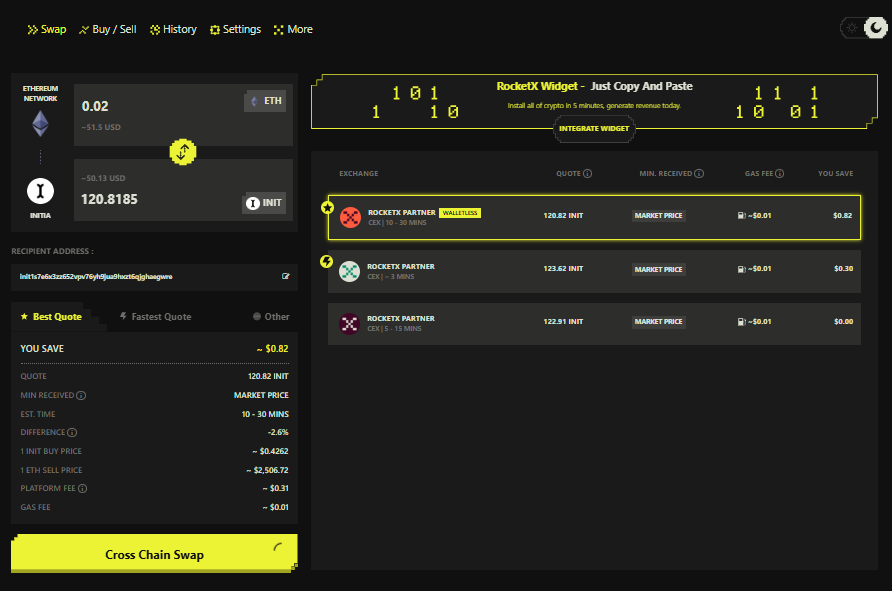
5. Enter Your Initia Wallet Address
Paste your Initia-compatible wallet address. If you’re using a supported wallet like MetaMask with MiniEVM apps, the address format may remain the same. Double-check for accuracy before proceeding.
6. Review and Confirm Transaction Details
Verify all details, including network names, token amounts, and estimated fees. Once satisfied, click “cross-chain swap” and approve the transaction via your connected wallet.
7. Complete the Bridge
RocketX will now handle the bridge and swap process automatically.
Your tokens will arrive on the Initia network within minutes—ready to be used across dApps, rollups, and DeFi protocols.
Initia Wallet: One Wallet to Access All of Initia
One of the biggest user pain points when entering a new blockchain ecosystem? Setting up yet another wallet. New chain, new extension, new backup phrase—it’s frustrating and unnecessary in 2025. That’s why Initia Wallet (via the Initia Wallet Widget) is a game-changer.
What Is the Initia Wallet Widget?
The Initia Wallet Widget is a lightweight, plug-and-play interface that allows users to connect their existing EVM-compatible wallets (like MetaMask or Rabby) to any dApp or roll-up in the Initia ecosystem. No need to download anything. No need to learn a new interface.
Click “Connect Wallet” → Choose your existing wallet → Start using apps on Initia.
Whether you’re interacting with a MoveVM-based roll-up, an EVM dApp, or a Wasm-powered protocol, the wallet widget handles it all in the background.
Why It’s a Big Deal
- Multi-VM Compatibility: Supports interaction with EVM, Move, and Wasm rollups using the same wallet.
- Unified UX: No matter which rollup or app you’re on, you use the same wallet interface.
- No Learning Curve: Users familiar with MetaMask or WalletConnect can onboard instantly.
The Future Potential of Initia Blockchain
The future of Initia looks incredibly promising, not just as a blockchain, but as a complete multichain operating system for Web3.
As the industry moves toward app-specific chains and modular scalability, Initia’s architecture is perfectly positioned to lead. By combining a powerful Cosmos-based Layer 1 with a plug-and-play rollup stack, Initia makes it easy for developers to launch their own customized blockchains with shared liquidity, built-in security, and multi-VM support.
What sets Initia apart is its focus on interoperability without fragmentation. Whether you’re building with EVM, Move, or Wasm, your app can tap into a common economic layer powered by INIT and Enshrined Liquidity—unlocking true composability across ecosystems.
The growing developer interest in modular frameworks like Initia’s Interwoven Stack signals a broader shift in Web3: one where projects want control, scalability, and connectivity—all in one place.
As more dApps and protocols choose Initia as their home, the INIT token will gain more utility, powering gas fees, governance, incentives, and liquidity at the core of this thriving ecosystem.
For users and developers alike, Initia is more than a blockchain—it’s a gateway to the next evolution of Web3.
Final Thoughts
Initia is more than just another blockchain—it’s a fully integrated, modular multichain framework designed to power the next generation of scalable Web3 applications. With its combination of high-speed rollups, customizable infrastructure, and unified liquidity through INIT, Initia provides both developers and users with the tools they need to build, explore, and scale without limitations.
But getting started on a new chain shouldn’t be difficult. That’s where RocketX Exchange comes in.
As one of the only platforms that supports bridging to Initia from nearly 200 blockchains, RocketX makes the onboarding experience frictionless. Whether you’re transferring ETH from Ethereum, USDT from Arbitrum, or any other token from another network, RocketX handles the route, bridge, and swap in a single click.
With Initia’s ecosystem growing rapidly and the INIT token already live, now is the perfect time to explore what this network has to offer—and RocketX is the smartest way to get there.


